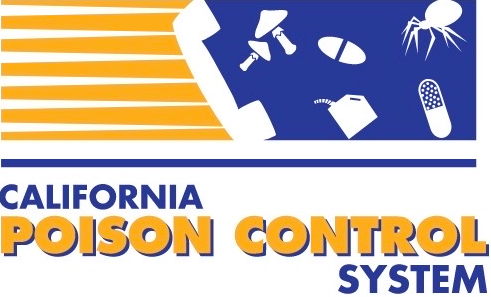by Alicia Minns, MD
Introduction
Ciguatera is one of the more common causes of fish-related foodborne illness in the United States. It is caused by toxins that accumulate in the flesh of large predatory fish found in tropical oceans. The name ciguatera is derived from the Spanish name cigua for the sea snail Turbo pica found in the Caribbean Spanish Antilles. This neurotoxic syndrome has been recognized throughout history, with one of the earliest cases having probably been reported in the 4th century when Alexander the Great refused to allow his soldiers to eat fish. One of the earliest written records of suspected ciguatera poisoning is from the journal of Captain William Bligh, who described symptoms consistent with ciguatera in 1789 after eating mahi-mahi. In addition, it was also quite possibly ciguatera that was illustrated by Captain James Cook while sailing on the Resolution in the South Pacific in 1774.
Of reported cases, 75% (except in Hawaii) involve the barracuda, snapper, jack, or grouper. Hawaiian carriers of the toxin include parrot-beaked bottom feeders and surgeonfishes, particularly those inhabiting waters with high dinoflagellate populations, such as those with disturbed coral reefs. Ciguatera has also been reported after ingestion of farm-raised salmon. There is one report of ciguatera from consumption of jellyfish.
Case presentation
A 24-year old male developed nausea, vomiting and loose stools 12 hours after eating parrotfish during a trip to the Cook Islands. His symptoms were followed by fatigue, generalized weakness and extreme pruritus. He also had paresthesias of the mouth and extremities, and cold allodynia. Most of his symptoms resolved after 4 weeks, however the cold allodynia persisted for several months.
Questions
- What is the mechanism of action of the toxin that causes ciguatera?
- What is the typical clinical presentation of ciguatera fish poisoning?
- How is ciguatera best treated?
Epidemiology
Ciguatera Fish Poisoning (CFP) is an important cause of foodborne disease and is endemic throughout subtropical and tropical regions of the Indo-Pacific and Caribbean. More than 400 species of fish have been implicated to cause CFP. In the United States, CFP is a prominent nonbacterial food poisoning associated with fish, second only to scombroid, with cases having been reported in many states. Outbreaks of ciguatera are greatest between the months of April and August. In endemic areas, the incidence is estimated to be between 500 and 600 cases per 10,000 people. Worldwide, ciguatera may affect more than 50,000 persons each year. Most cases in the United States occur in Hawaii and Florida, with the incidence in Florida estimated to be five cases per 10,000 people. The true incidence of CFP is difficult to ascertain because of underreporting. It is believed that only 2% to 10% of CFP cases are reported to health authorities. Outbreaks of ciguatera have been associated with ingestion of warm-water, reef-dwelling fish caught in the zone between the latitudes of approximately 30 and 35 degrees. In addition, the advent of flash-freezing and shipping of fish around the world has accounted for several cases of ciguatera in nonendemic areas.
Pathophysiology and pharmacokinetics
The blue-green and free algal dinoflagellate Gambierdiscus toxicus is thought to be responsible for producing ciguatoxins. G. toxicus adheres to dead coral surfaces and marine algae that are consumed by smaller herbivorous fish. Although G. toxicus is very likely responsible for the majority of ciguatoxins encountered in fish, the cyanobacterium Trichodesmium erythraeum can produce precursors to the toxins that may generate ciguatera syndrome. Other dinoflagellates may also generate toxins that play a role in ciguatera syndrome. Larger reef fish eat the contaminated smaller fish, thereby becoming vectors, as ciguatoxin is bioconcentrated up the food chain. It has long been assumed that smaller fish within a given species are safer to eat than the larger ones. However a recent study sampling different species from French Polynesia found no relationship between the toxicity of the fish and the size observed. Although the entire fish is toxic, the viscera (particularly the liver) and roe are considered to carry the highest concentrations of toxin.
It has been suggested that proliferation of toxic algae may be triggered by contamination of water from a number of sources, including industrial wastes, golf course runoff, metallic compounds, ship wreckage, or other pollutants. In the Marshall Islands (Micronesia), consequent to nuclear testing, the incidence of toxin-producing plankton has tripled. Similar observations have been made with respect to various military activities (dumping and explosives) in the Line Islands and Gilbert Islands (Kiribati, Central Pacific), Hao Atoll (Tuamotu Archipelago, French Polynesia), Gambier Islands (French Polynesia), and others. Yet another cause of toxic dinoflagellate proliferation may be transfer and dumping of ballast water from large oceangoing vessels.
Three major ciguatoxins (CTX-1, CTX-2, and CTX-3) are usually found in the flesh and viscera of ciguateric fishes. Each is found in variable concentrations, which may account for inconsistency of reported clinical signs and symptoms. Ciguatoxins are potent Na+ channel toxins and exert their effects by activating voltage-sensitive Na+ channels. The Na channels open at resting membrane potentials, leading to spontaneous firing of neurons, giving rise to the neurologic signs and symptoms of ciguatera. Electrophysiologic studies of the sural and common peroneal nerves in humans with ciguatera, demonstrating reduced light touch, pain, and vibratory sensation in the extremities, showed prolongation of the absolute refractory, relative refractory, and supernormal periods. These findings indirectly suggest that CTX may abnormally prolong sodium channel opening in nerve membranes.
All identified toxins associated with ciguatera are unaffected by freeze-drying, heat, cold, and gastric acid and do not affect the odor, color, or taste of the fish. There is some evidence that cooking methods can alter the relative concentrations of the various toxins. For example, boiling fish flesh will remove water-soluble toxins, but frying or grilling the flesh may increase toxicity of lipid-soluble toxins as a result of releasing lipid-soluble components from the cellular compounds to which they are normally bound.
Clinical presentation
CFP is associated with gastrointestinal, cardiovascular, neurologic, and neuropsychiatric symptoms and signs. The meal containing ciguatoxins is generally unremarkable in taste and smell. Symptoms may develop within minutes of ingestion, although they generally occur within 2 to 6 hours after the meal. Almost all victims develop symptoms by 24 hours. The severity of symptoms seems to follow a dose-dependent pattern, with victims who eat larger portions of ciguatoxic fish experiencing more severe symptoms. Additionally, there are variable concentrations of ciguatoxin within a fish, depending on the fish size, age and part consumed, with higher concentrations in the viscera, especially the liver, spleen, gonads, and roe.
The most common initial symptoms reported in cases of ciguatera include acute gastroenteritis, with abdominal cramps, nausea, vomiting, and diarrhea. These symptoms rarely persist for longer than 24 hours but may require fluid resuscitation. Headache is a common symptom, and victims often complain of experiencing a metallic taste. In a well-described clinical outbreak affecting a group of scuba divers who consumed coral trout (Cephalopholis miniatus), the most common symptoms were weakness, cold sensitivity, paresthesias, a taste sensation of carbonation, and myalgias. Two men suffering from ciguatera poisoning had painful ejaculation with urethritis, which in turn may have induced dyspareunia (pelvic and vaginal burning) in their female partners after intercourse. In a North Carolina outbreak in 2007, six of the seven sexually active patients reported onset of painful intercourse beginning in the first few days after the onset of illness. Although sexual transmission of ciguatoxin has been documented, painful intercourse as a consequence of ciguatera fish poisoning is not commonly described. Neurologic symptoms seem to develop after initial gastrointestinal symptoms. Paresthesias and myalgias are typically seen within the first 24 hours and usually resolve by 48 to 72 hours after ingestion of ciguatoxins, although there have been reports of neurologic symptoms persisting for weeks to months.
Many case reports of ciguatera describe symptoms of a sensory perception of “hot and cold reversal,” and loose, painful teeth. Although presence of these symptoms is suggestive of ciguatera, their absence does not exclude possibility of the disease. This peculiar symptom may have a delay in onset of 2 to 5 days, may last for months after ingestion. These symptoms are commonly associated with a polyneuropathy, predominately affecting sensory small fibers. Pruritus is another vague but often-described sensation in victims of ciguatera and may persist for weeks and be exacerbated by any activity that increases skin temperature (blood flow), such as exercise or alcohol consumption.
Tachycardia and hypertension are often described in ciguatera poisoning, in some cases after transient bradycardia and hypotension, which can be severe. Hallucinations, flushing, flaccid paralysis, and fever occur but are uncommon. More severe reactions tend to occur in persons previously stricken with the disease. Severely affected persons may report intermittent symptoms for up to 6 months, with a gradual diminution in frequency and intensity. There may be some regional variability to the symptoms of presentation. Reappearance or worsening of symptoms after alcohol consumption has been described. Although both gastrointestinal and neurologic effects are the hallmarks of ciguatera intoxication, there are regionally dependent differences in clinical presentation. Neurologic effects predominate in the Indo-Pacific region, whereas gastrointestinal symptoms predominate in the Caribbean.
Whether ciguatoxin crosses the placenta is not known, but exposures during pregnancy have resulted in normal fetal outcomes. Transmission via breast milk has been reported. In small children, symptoms of ciguatera poisoning may be no more specific than irritability, sleep disturbance, nausea, and vomiting. Other reported symptoms include carpopedal spasm, ptosis, and inconsolability.
An overall death rate of 0.1% to 12% has been reported with ciguatera, but the lower percentage seems more likely with modern supportive care. Death is usually attributed to respiratory paralysis.
Diagnosis
The diagnosis of ciguatera poisoning is based on clinical symptoms. Differential diagnosis includes paralytic shellfish poisoning, eosinophilic meningitis, type E botulism, organophosphate insecticide poisoning, tetrodotoxin poisoning, and psychogenic hyperventilation. Temperature-related dysesthesia has also been reported in neurotoxic shellfish poisoning (NSP) from consumption of shellfish contaminated with brevetoxin. Therefore, NSP should be considered in the differential diagnosis. Unreliable folklore used in the past to aid in predicting ciguatoxic seafood includes the advice that a lone fish (separated from the school) should not be eaten. Other myths include ants and turtles refuse to eat ciguatoxic fish, that a thin slice of ciguatoxic fish does not show a rainbow effect when held up to the sun, and that a silver spoon tarnishes in a cooking pot with ciguatoxic fish. Ciguatoxin may be detected in the flesh of fish by two immunoassay techniques, a mouse bioassay where a sample of the fish is injected intraperitoneally into a mouse, and a rapid IgG assay. Rapid immunoassays have largely replaced using mice and other archaic tests. Unfortunately, tests for ciguatoxin are still of limited clinical benefit because most institutions do not have the equipment needed for their performance. Also, multiple individuals presenting with the same symptomatology that is consistent with CFP after consuming the same fish strongly supports the diagnosis.
Treatment
If possible, a piece of the implicated fish should be obtained in the event that analysis for ciguatoxins can be performed. Treatment of ciguatera poisoning is primarily supportive. Intravenous hydration with crystalloid and electrolyte replacement may be necessary for dehydration. Severe or refractory hypotension may require a vasopressor. Antiemetics such as ondansetron may be beneficial. Atropine has been shown to be effective in patients with symptomatic bradycardia. Gastric decontamination is rarely indicated, because presentation is usually delayed and gastroenteritis has already occurred. Activated charcoal may bind some of the toxin in the gastrointestinal tract, but this is not useful when presentation is more than 1 to 2 hours after exposure.
Many traditional remedies have been used for centuries to treat ciguatera. Edrophonium, neostigmine, corticosteroids, pralidoxime, ascorbic acid, pyridoxine (vitamin B6), salicylic acid, colchicine, and vitamin B complex have all been tried with variable success; however, there is no current clinical support for these modalities. Local anesthetics such as lidocaine have also been administered for treatment of ciguatera. These agents are effective blockers of sodium influx and may antagonize the sodium channel effects of ciguatoxin. In addition, amitriptyline has been used for its sodium channel blocking effects, as well as its potent antimuscarinic effects.
Mannitol has become the most widely applied therapy in severe cases of ciguatera poisoning. Most reports of its success are based on limited data with small numbers of patients. One series described successful treatment with mannitol in 24 victims of ciguatera poisoning. Each was infused with up to 1g/kg of a 20% mannitol solution intravenously over 30 minutes. None of the victims received more than 250 mL. The mechanism by which mannitol might be effective in abating the neurologic symptoms from ciguatera poisoning is unknown, but suggested theories have included acting as a free radical scavenger, competitive inhibitor of ciguatoxin at the cell membrane, and promoting a decrease in Schwann cell edema. A more recent double-blinded, randomized study on mannitol therapy found no difference in resolution of symptoms when compared with saline. Of note, therapy was not initiated until an average of 19 hours after exposure in the mannitol group and 40 hours after exposure in the saline group. In humans, the empiric observation is that mannitol has greater benefit if administered early in the course of illness, so the delay may have diminished the effect in this study. One concern with administration of mannitol in the setting of ciguatera is that patients may present dehydrated. In these cases, patients should be adequately rehydrated before administration of mannitol. During recovery from ciguatera, it is recommended that victims exclude fish, shellfish, alcoholic beverages, and nuts and nut oils from their diet, as these could result in an exacerbation of the syndrome. Gabapentin has been used successfully in the treatment of chronic symptoms after ciguatera poisoning, but symptoms seem to recur after cession of therapy in some patients.
Discussion of case questions
- The dinoflagellate Gambierdiscus toxicus is thought to be responsible for producing ciguatoxins, which are bioaccumulated up the food chain. Ciguatoxins are potent Na+ channel toxins and exert their effects by activating voltage-sensitive Na+ channels. The Na channels open at resting membrane potentials, leading to spontaneous firing of neurons, giving rise to the neurologic signs and symptoms of ciguatera.
- CFP is associated with gastrointestinal, cardiovascular, neurologic, and neuropsychiatric symptoms and signs. Acute gastroenteritis may be followed by headache and a variety of neurologic symptoms including weakness, myalgias, paresthesias and cold sensitivity.
- Treatment for ciguatera fish poisoning is mainly supportive. Several remedies have been tried with mannitol being the best studied. The evidence for mannitol use is conflicting however may be of benefit if used early in the clinical presentation.



